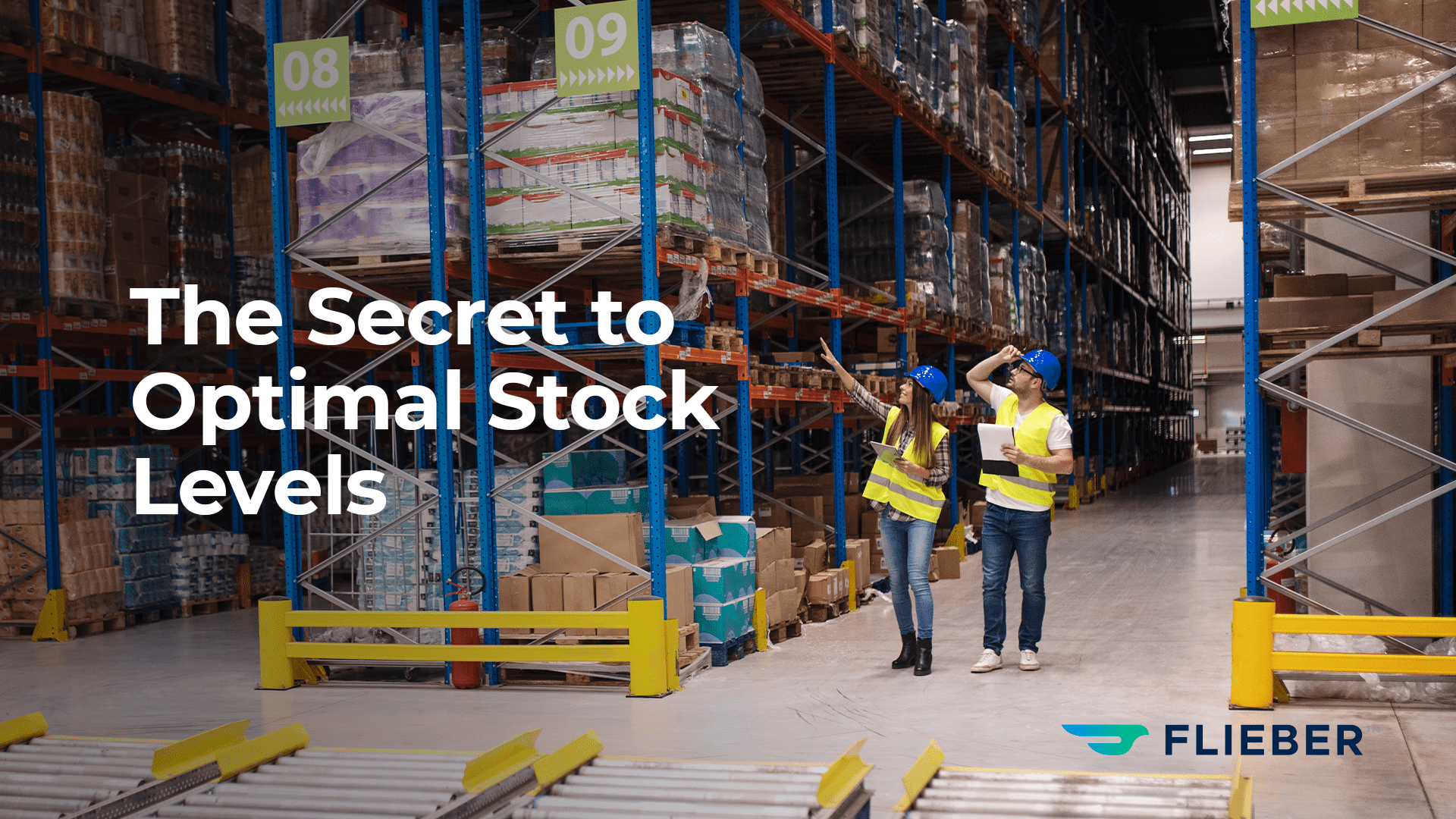High sales velocity and enough stock to service it is every online retailer’s dream—and these two levers (sales and inventory) must work together like a well-oiled machine in order to achieve it. Sounds simple, right?
So, why is it that so many sellers still suffer from costly stockouts?
In 2016, retailers lost an estimated $1.75 trillion due to stockouts, overstocks and returns. With the recent growth of retail, this number may well be close to $2 trillion today.
Clearly, avoiding going out of stock isn’t as simple as ordering more inventory or getting better at forecasting.
For lasting results that keep your sales strong year-round, you need a sophisticated, multi-layered approach. And it doesn’t have to be as hard as it sounds.
Let’s dive into how you can optimize your inventory availability and sales pace, to keep stockouts, costs, and receding margins at bay.
Table of Contents
- What Is a Stockout? (And Why Is It Such a Nightmare?)
- 3 Worrying Consequences of Going Out of Stock
- How to Avoid Out of Stock Drama (Hint: Bring Your Sales Pace Into the Fold)
- Rapid-Fire Tips to Nail Supply Chain Management Long-Term
- Win the War Against Stockouts

What Is a Stockout? (And Why Is It Such a Nightmare?)
In short, a stockout is just what it sounds like—it’s when your store doesn’t have enough inventory to fulfil the orders coming in.
But the real story with stockouts goes way deeper.
Contrary to popular opinion, both stockouts and overstock result not just from poor inventory management, but from poor coordination between sales and inventory.
For example, let’s say you collaborate with a popular influencer on a month-long campaign. You already know your baseline inventory requirements for that time of year, but this figure will be altered by the spike in traffic and sales from the influencer campaign.
Over the first few days of the campaign, you analyze store data to determine how much additional stock you’ll need to avoid that dreaded out-of-stock notification.
But in all honesty, it’s more of a guess than a concrete estimate. If the campaign succeeds, your sales skyrocket… but your inventory can’t keep up.
This is just one small example of how a single outlier can throw off your entire forecast. And in the fast-changing world of ecommerce, it’s easy to see how quickly things can turn sour if you choose to manage your inventory without also having a firm grip on your sales pace.
3 Worrying Consequences of Running Out of Stock

- Poor customer experience
Poor customer experience (CX) is one of the most expensive inventory mistakes you can make as an online retailer.
These days there are tons of options on the market, and fast fulfillment has become the standard—you can’t get away with shipping products inconsistently. Your customers will notice and may go elsewhere if your service isn’t cutting it. 👋🏽
And without your customers, there is no business. Here are a few stats on why you can’t afford to let your CX slip:
- 33.7% of people tell someone when they’ve had a bad experience with a business.
- Just 40% of customers will trust a business with a poor CX, compared to 76% of customers that trust companies with good CX.
- Companies that invest in CX get an 80% boost in revenue compared with businesses that don’t invest.
A misalignment between your customers’ expectations and your inventory capabilities can lead to bad reviews, reputational damage and a long-term loss in sales.
- The eye-watering stockout cost
No one likes high fulfillment costs or losing profits, but that’s what awaits you on the other side of a stockout.
You’ll have to make rash decisions, like placing a rush order with your supplier (even if it incurs extra fees), and using the fastest shipping method like air freight. This process is far from cheap, forcing you to wave goodbye to your margins and profitability. 💸
Even backorders and cancellations will cost you.
Pulling stock from your supplier’s manufacturing line and shipping it straight to the customer can skyrocket your fulfillment costs. As for canceled orders, you may have already bought the raw materials to make the goods by the time the customer decides they don’t want to wait.
- All those lost opportunities
Out of stock problems can drag on, and you’ll have to foot the bill for any damage control you initiate, like offering a discount on the affected customer’s next purchase which they could redeem at any time.
But the true cost for your business doesn’t end there.
If you’re trading on a marketplace like eBay or Amazon, you could lose your precious ranking and the time and money you poured into ads and listing optimization to get there. For that, you can thank your marketplace’s ranking algorithm which will now view your brand as less reliable than your competitors.
Not only that, depending on the terms and policies of the marketplace in question, additional inventory restrictions and limitations can be applied to your profile until you manage to get back in good standing. (If you’ve ever had to grapple with Amazon’s stringent IPI scores, you know all about this one.)
Of course, you’ll also incur an opportunity cost as you watch any product pages that are still ranking get hit after hit with no stock in sight. 😫
Clearly, there are huge penalties for messing up your sales and inventory optimization. Luckily, there are also some ways to protect yourself from these risks.

How to Avoid Out of Stock Drama (Hint: Bring Your Sales Pace Into the Fold)
If our rundown of out of stock problems made you break into a cold sweat, we don’t blame you—these problems can destroy an otherwise healthy business.
But how do you get ahead of these issues and avoid stockouts for good?
Let’s break down exactly how to stay in stock 100% of the time.
Step 1: Change Your Mindset
We hate to get all philosophical on you, but you can’t cure out of stock headaches, without first tackling the root cause.
To keep your ecommerce store in stock permanently, you need to change the way you think about inventory optimization. Resist the urge to see it as a boring back-end task and get to know it for what it is: a crucial sales function.
We get it. Inventory optimization probably doesn’t set your soul on fire. Many sellers don’t get into the business for the thrill of staring at stock figures. But acknowledging the importance of both sales and inventory tasks is crucial to preventing you from falling back into old habits.
When you make this one crucial mindset shift, you’ll turn over a whole new leaf in your business. Soon, analyzing your sales stats and inventory numbers will become second nature and half the battle will be won.
But first, you also need to…
Step 2: Know Your Enemy
One of the best ways to win a war is to know your opponent inside out—and out of stock problems are no different.
Investigate the root cause of your out of stock issues and define your real stockout costs, so you know the beast you’re dealing with. You should also have deep insight into your sales levers like territory, products, pricing and the customers in your niche.
Look at your data and ask yourself:
- Have any of our marketing activities led to us going out of stock?
- Do our products have seasonality? If so, when are our peak and off-seasons?
- How did our sales shift after we introduced a new product offering or line?
- How many times do we go out of stock every week, month, and year?
- Is there an out of stock trend in a particular date range or time? For example, every last Friday of the month at 9pm.
- What do our sales figures look like when we run out of inventory?
- Are there any ad campaigns, price points, products, etc. that cause significant spikes in sales?
- Which products are repeat offenders for stockouts?
- Are there any specific customers that cause items to go out of stock? Such as wholesale clients, bargain hunters, bulk buyers, etc.
Your answers will clarify the extent of your out of stock problem and help pinpoint areas for improvement in your supply chain strategy.
Step 3: Create a Smart Workflow to Unify Your Sales Pace and Inventory Availability
Once you’ve noted down your reasons for out of stocks, set up a system that allows you to check how fast they appear so you can monitor your inventory levels in real-time.
Use the information you collect to set up automated reorder points and stock alerts to fit your brand’s sales peaks and troughs, and ensure you never get blindsided by out of stocks and costly human errors.
For example, unlike other tools on the market that force you to choose between focusing on sales or inventory, Flieber uses advanced algorithms to merge sales and inventory optimization for better decision making across the board.
Once you’ve got your system set up, it’s time to combine it with some good, ol’ fashioned strategy planning with a twist. Craft a game plan that helps you tackle out of stocks from the inventory and sales angles.
For example, when you notice you’re nearing an out of stock, here are some ways you could respond:
Inventory strategy
- Initiate use of your emergency stock
- Order first stockpile from a local supplier to reduce lead time
- Transfer inventory between locations, e.g., different warehouses in your home country
- Accelerate POs with your supplier(s)
- Ship everything by air
Sales strategy
- Reduce or turn off marketing campaigns, e.g., pause pay-per-click ads, remove items from banners, etc.
- Increase price of items close to going out of stock to reduce the sales pace
- Change the positioning of items on your store that are depleting fast, e.g., reposition to the bottom of the page
- Dropship items while you wait for more inventory
With a robust supply chain management tool and knockout sales and inventory strategy, you’ll have all you need to take on out of stock issues and win. Thanks to the many recovery options now at your disposal, if a stockout disaster looms you can preserve your margins, profit, and brand reputation.
Before you know it, you’ll be miles ahead of your competitors who are still limping along with way too many close calls.
Plus, you’ll have more time to dedicate to income-producing activities like product launches and business expansion. Now that’s what we call a comeback! 💪🏾
Step 4: Review and Refine Your Supply Chain Management Strategy All. The. Time.
Chances are, you won’t get everything right your first time around—and that’s ok.
Even if your first attempt runs without a blip, customers and markets change—which can make your strategy insufficient overnight.
That’s why it’s essential to step into this journey as a life-long student.
Here are a few ways to sharpen your skills:
- Stay on top of industry trends
- Investigate how other stores manage their inventory
- Transplant stock management methods from different niches
- Take training courses on supply chain management
When you improve your inventory optimization processes intentionally and incrementally, you solidify your business’ foundation and equip it to handle new and unexpected challenges.
Rapid-Fire Tips to Nail Supply Chain Management Long-Term
Always keep buffer stock
By now, you know how fast ecommerce moves.
One minute you’re in stock with a smooth running store, next you’re in total stockout chaos because one of your promotions has gone viral. These types of situations highlight why it’s vital you keep some spare stock in all your main territories.
The amount you store should be enough to cover you while your products are produced, flown in, and processed at your warehouse.
Don’t forget to add a replacement order for this stock to your next reorder (you can automate this in Flieber 😉).

Be honest with your customers
Honesty is the best policy.
If you know stock is low and there’s nothing you can do to rectify it, give your customers a heads up.
You could even use this as an opportunity to build some excitement and exclusivity around your products by asking customers to sign up to be one of the first notified when your new stock lands—saving them from disappointment and regaining sales you might have otherwise lost.
Seek out flexible, trustworthy suppliers
There are few things more frustrating than a rigid and unhelpful supplier.
Your supplier relationships are ”make or break” for your ecommerce business and dictate whether you can restock quickly, keep your margins intact, and avoid long out-of-stock periods.
Invest a little time in finding suppliers that understand the game of online retailing and their role in it—but more importantly, make sure they can be counted on to stick to their word and deadlines.
Consider a ”product drop” model for popular items and create a waiting list
Rather than having a continuous stock flow, you could opt to launch your product at certain times of the year.
Not only does this unify your sales pace and inventory by allowing you to plan stock based on past launches, it also gives you enough time to prepare for the next ‘drop’.
When done correctly, time-sensitive product releases drum up excitement for the current and future releases. Some sellers even sell out, meaning they don’t have to deal with overstocks.
Win the War Against Stockouts
Going out of stock can spark fear in even the strongest-willed entrepreneurs—and it can’t be solved with a one-sided outlook or strategy.
To successfully rid your business of out of stock woes, first you need to understand the importance of unifying sales pace and inventory availability. The insights from each will help you take back control of your supply chain, optimize your inventory, and shield your business from the need to take drastic actions which can hinder future sales and growth.
Competition in ecommerce is increasingly fierce and the margin for error is small, so there’s never been a more critical time for you to lay out of stock issues to rest. Trust us, your future self will thank you for it.
Written by Fabricio Miranda, CEO & Co-Founder at Flieber
Ready to master your supply chain management and skyrocket your sales?





